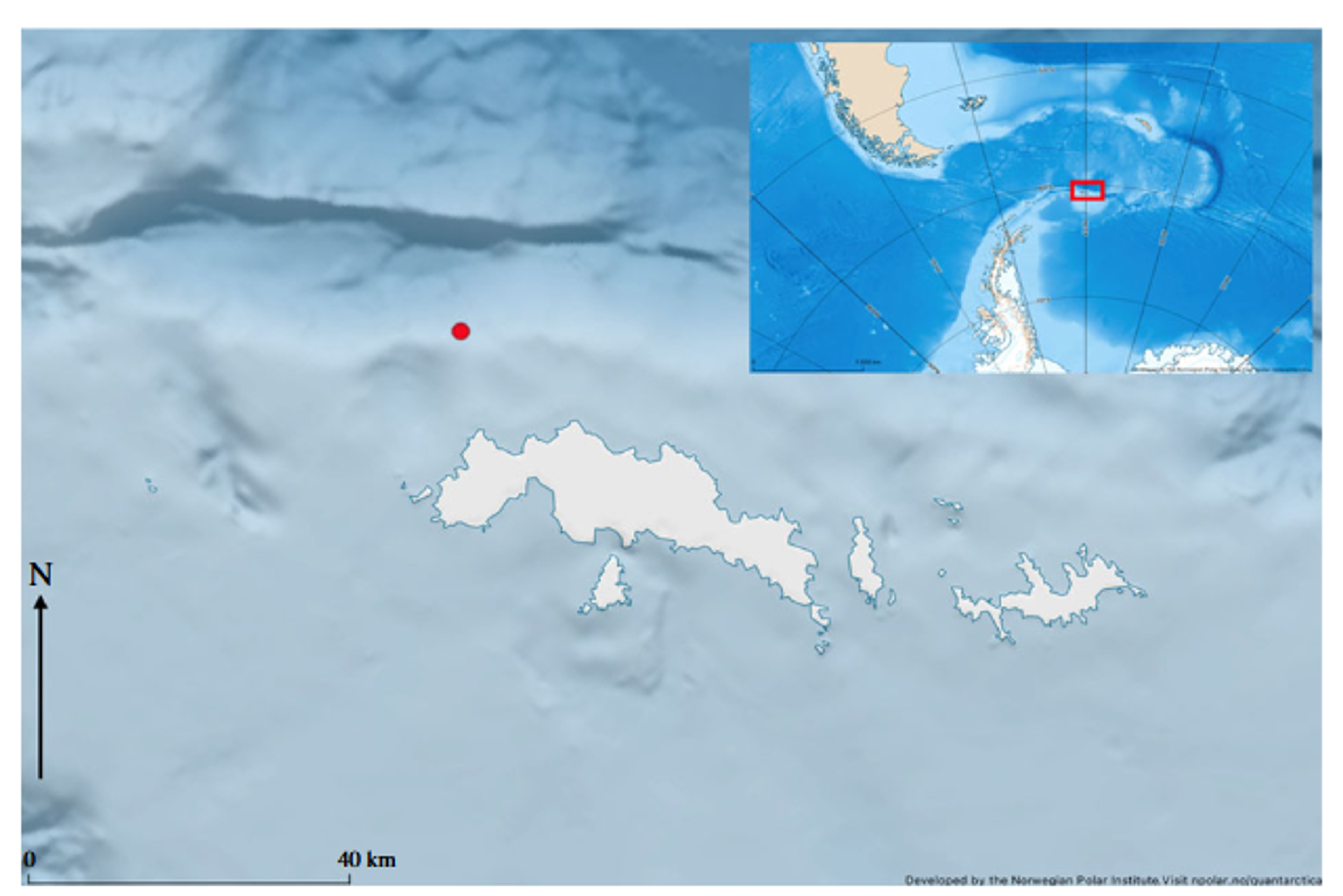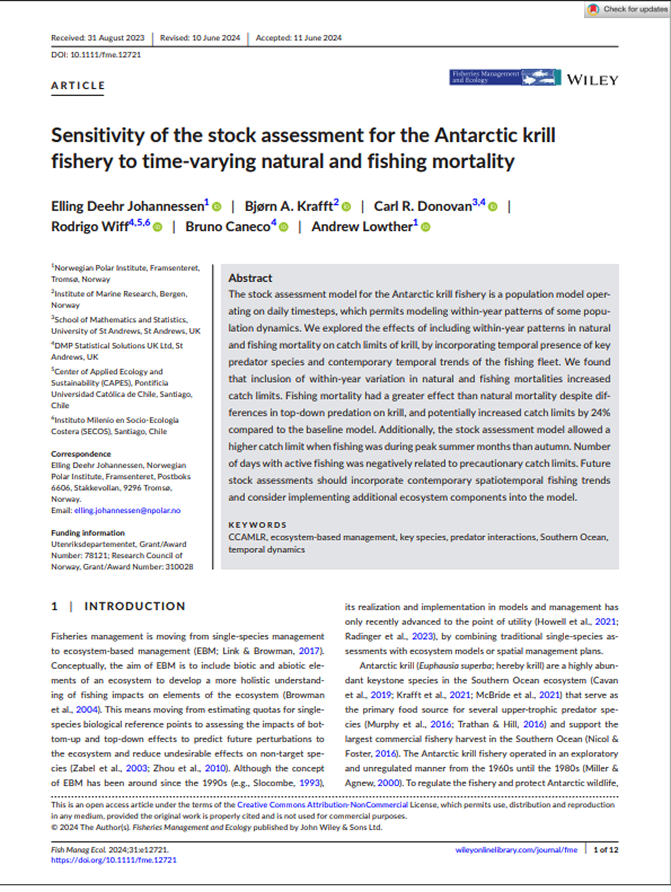Biomass
Antarctic ecosystem
Climate
Krill (Euphausia superba)
Seasonal acoustic presence of marine mammals at the South Orkney Islands, Scotia Sea
Summary
This study used underwater sound recording devices to monitor marine mammal presence at the South Orkney Islands during two years with very different environmental conditions (2016 El Niño event versus 2017). Seven marine mammal species were detected through their calls, including five baleen whale species and two seal species. The research revealed seasonal changes in which species were present, with ice-avoiding species (humpback, fin, and southern right whales) being most common during summer and autumn, while ice-associated species (minke whales and seals) became more prominent during winter. The 2016 El Niño climate event significantly changed which species were present and when, demonstrating how climate variations affect marine mammal distributions in this important krill fishing region.

1
Map showing the study area at the South Orkney Islands, located at the southern edge of the Scotia Sea. The red dot shows the location of the underwater sound recording device in the Coronation Trough west of Coronation Island, which collected marine mammal calls during 2016 and 2017.Key Findings
1
Seven marine mammal species were identified through underwater sound recordings over 16 months of monitoring. 2
Species composition showed clear seasonal changes related to sea ice conditions in the area. 3
Ice-avoiding species (humpback, fin, and southern right whales) were most common before winter began. 4
Ice-associated species (minke whales and seals) became more prominent during the winter months. 5
The 2016 El Niño climate event significantly altered which species were present and when they appeared. 6
Blue whales were detected year-round but used different types of calls during different seasons. 7
The total number of species remained stable throughout the year, but the mix of ice-avoiding versus ice-associated species changed seasonally.

